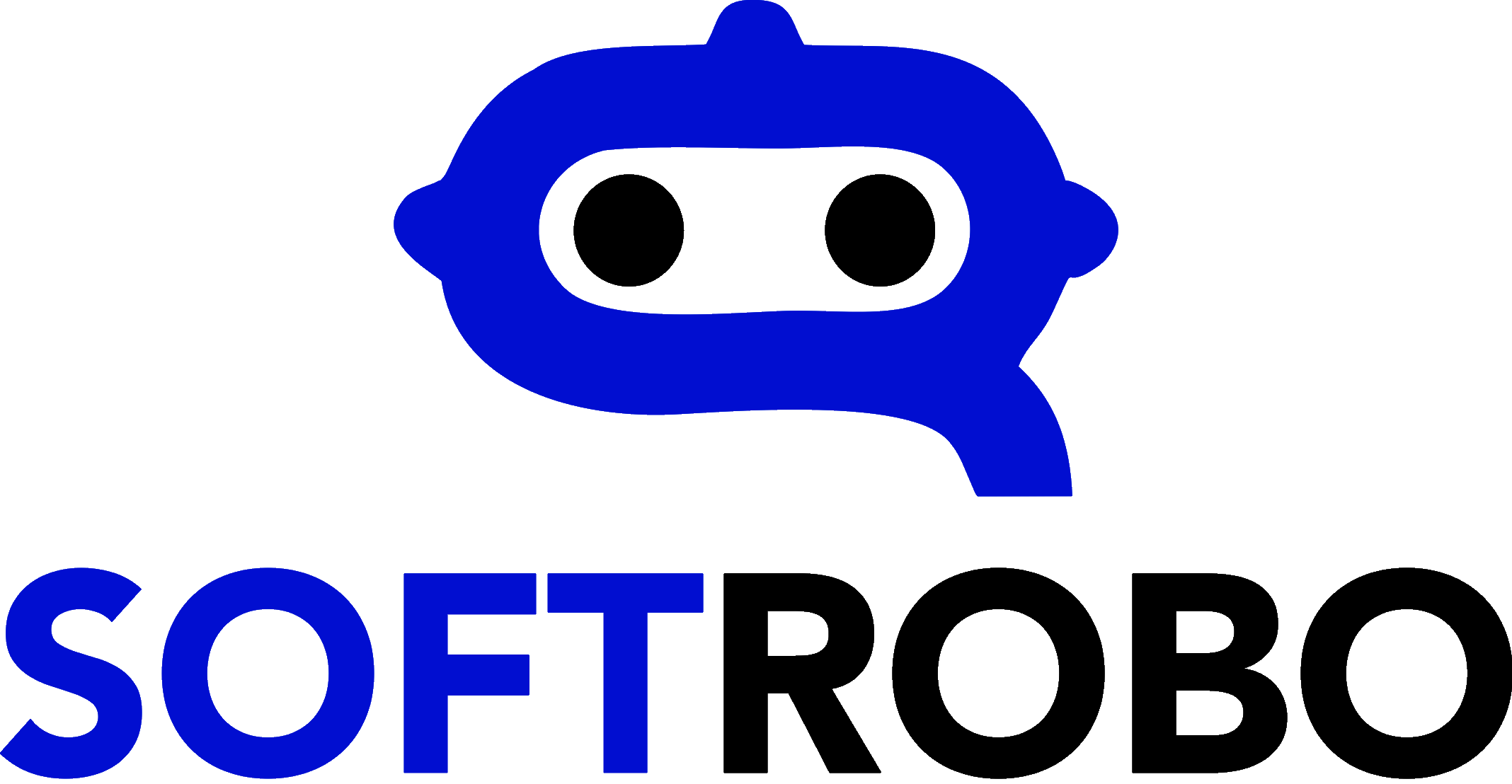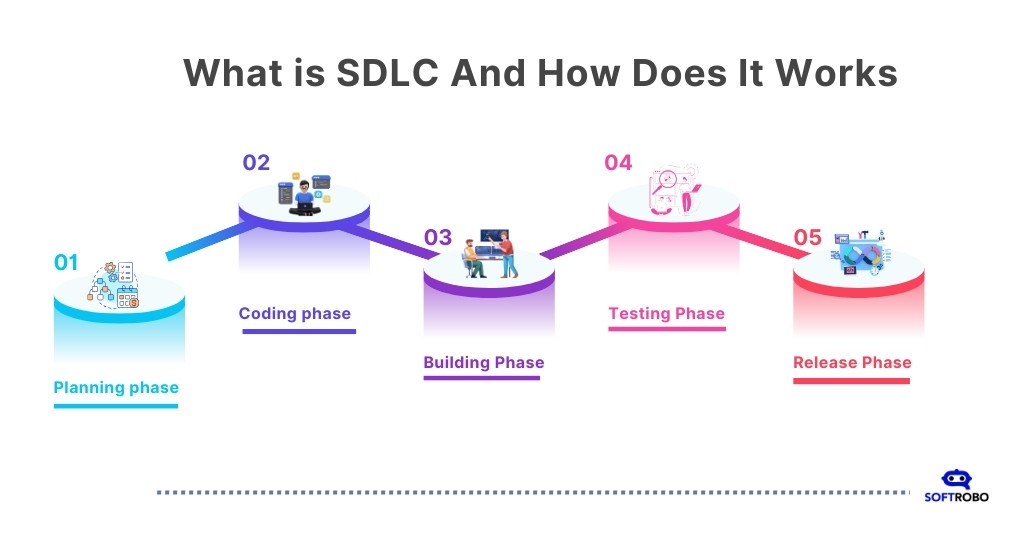The Software Development Life Cycle (SDLC) is a structured method that makes it possible to make high-quality, low-cost software as quickly as possible. The SDLC’s goal is to make better software that meets and goes beyond all customer needs and standards.
The SDLC is a detailed plan made up of steps, or phases, that each have their own process and deliverables. Following the SDLC speeds up development and lowers the risks and costs of projects that come with using other methods of production.
How was the SDLC created?
Computer science made a lot of progress in the 1950s and 1960s. Because things changed so quickly, the seeds of a production system were planted, which grew into the SDLC we know today.
Before the 1950s, computers were not complex enough to need a methodical technique like the SDLC. The idea of organized programming came about as programming got more complicated and bigger. Over time, structured code called for more tactical development models. This is what started the SDLC.
Why is the SDLC important?
- It sets up a standard structure that spells out tasks and results.
- This tool helps with planning, estimating, and scheduling projects.
- It also makes tracking and managing projects easier.
- It gives everyone involved in the development process more information about all stages of the project’s life.
- It speeds up development, improves client relations, and lowers project risks.
- It lowers the costs of project management and production as a whole.
The role of security in the SDLC
When the SDLC was first thought of and made, security tasks were seen as separate and unique tasks that were done during the testing step. This “after the fact” method had a lot of problems because bugs and security holes were often found too late or not at all.
Today, everyone knows that security is an important part of the SDLC and that incorporating security tasks into the SDLC makes software more reliable.
Integrating security practices and measures into the early stages of the SDLC helps find and fix flaws faster, which saves time and money on fixes later in the project’s life cycle.
This idea of “baking-in” security creates a “Secure SDLC,” which is a concept that is widely known and used in the software business today. To make the SDLC safe, security checks and practices must be used at ALL stages of software creation.
It is easy to add security to every step of the SDLC with today’s application security testing tools. In line with the idea of a “secure SDLC,” it is important that security-related tasks like penetration testing, threat modeling, code review, and design analysis are a big part of the development process.
Some of the main benefits of using a safe SDLC method are:
- More secure software because safety is always a worry
- Concerns about security that parties are aware of
- Finding flaws in the system early on
- Cost savings because problems are found and fixed early on
- Overall, the organization’s business risks have gone down.
How does the SDLC work?
Planning phase
All parts of project and product management are included in the planning step. This usually includes allocating resources, planning for capacity, making a schedule for the job, estimating costs, and making sure everything is ready.
During the planning process, the development team gets feedback from customers, sales, developers, and experts from inside and outside the company. This information is put together to make a thorough list of what needs to be done to make the software that is wanted.
The team also figures out what resources are needed to complete the job and then guesses how much those resources will cost.
During this time, too, expectations are made clear; the team figures out both what they want in the software and what they don’t want it to do. Project plans, estimated prices, projected schedules, and lists of what needs to be bought are all real deliverables from this phase.
Coding phase
In an integrated development environment, system design is part of the coding step. It also comes with code review and static code analysis for a number of different kinds of devices.
Building Phase
In the building process, the code requirements that were set earlier are used to start making the software.
Testing Phase
This step includes testing the software that was made. The testing team looks at the finished product(s) to see if they meet the needs that were set out in the “planning” process.
Functional testing, such as unit testing, code quality testing, integration testing, system testing, security testing, speed testing, acceptance testing, and so on, are all part of the evaluations.
When a bug is found, developers are informed. A new version of the software is made after any valid (real) bugs are fixed.
Automated testing is the best way to make sure that all tests are run regularly and correctly. Tools for continuous merging help with this.
Release Phase
The release process is when the team packages, manages, and sends out releases to different environments.
Deploy Phase
This is when the program is put into the production environment for real.
Operate Phase
In the operate step, the software is put to use in a real-world setting.
Monitor Phase
During this phase, different parts of the software are watched. These could include how well the system works generally, how the users feel about it, any new security holes, and an analysis of any bugs or mistakes in the system.
What are the SDLC models/methodologies?
Waterfall
The oldest, simplest, and most structured way is called waterfall. Each phase is dependent on the result of the one before it, and they all happen one after the other.
This model gives you structure and a real result at the end of each step. But this plan doesn’t work well when you need to be flexible. If you want to make changes after a part is finished, you will have to pay more, wait longer, or get lower quality software.
Agile
With the agile method, there are regular release cycles, and each one has small changes from the last one. The product is checked at every step.
Teams can find and fix small problems in projects with the help of the agile model, before they get worse. Teams can also involve business partners and get feedback from them as the project is being built.
Lean
The lean methodology for making software is based on the concepts and practices of lean manufacturing. The lean principles encourage making work flow better and building a culture of always getting better. The seven rules of lean are:
- Get rid of trash
- Boost learning
- Make decisions as late as you can.
- Deliver it as soon as you can.
- Give your team power.
- Build up your honesty
- Build in a broad way
Iterative
In the iterative process, each development cycle makes a version of the software that isn’t fully finished but can still be used. Each version adds more software requirements than the last. The first version only applies a small set of requirements. The full list of requirements is in the last version.
Spiral
The unique risk patterns of a project drive the development process in the spiral development model. The development team looks at the project and chooses which parts of the other process models to use.
V-Shaped
In the V-shaped model, the validation and verification stages happen at the same time. As the model is run in a V-shape, each phase of development is paired with a phase of testing. Each proof phase is linked to a validation phase.
SDLC best practices
Good conversation between everyone on the team is the most important best practice to add to your SDLC. The more things that are aligned, the better the chances of success.
Some signs of an SDLC that is working well are:
- The successful implementation of a full application security program
- Standards for code quality
- Working together well across teams
- Streamlined work processes
- Teams working together on different parts of the life cycle
SDLC common mistakes and challenges
There are a number of problems that could go wrong with an SDLC application. Not taking into account and meeting the wants of customers and other stakeholders in the process could be the biggest mistake. Because of this, system needs are misunderstood, and the end result is always disappointing.
The SDLC is also very complicated, which can make a project go off track or cause teams to lose sight of details and needs. It is very easy for a project to fail if it doesn’t strictly follow all of the guidelines and design plans.





Excellent breakdown of AI and automation KPIs! I like how you’ve separated bot-specific metrics like BSAT from traditional ones like CSAT and AHT-it really highlights the need for a balanced approach. The emphasis on tracking ROI alongside customer experience is spot on.